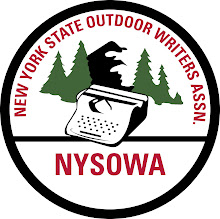By Bob McNitt
Prior to this year’s regular SZ deer season there seemed to be an unusually high report of antlered bucks being sighted, as well as rutting sign they’d made (rubs, scrapes, etc.), and the preliminary reporting of opening weekend by successful hunters seems to verify that there’s a higher than usual density of antlered bucks in many areas.
According to the DEC DFWMR reporting office: “ It was a windy start to the regular firearms deer season in much of the Southern Zone, but hunters appear to have managed well. Harvest reports from the opening weekend are up about 5 percent compared to opening weekend in 2009.
This first Saturday and Sunday of the Southern Zone regular deer season is an important time for deer hunters and deer harvest. In a 2007 survey (www.dec.ny.gov/docs/wildlife_pdf/hdrudeer07.pdf), roughly 85 percent of New York deer hunters indicated that they participated in the Southern Zone regular season. Of these hunters, about 93 percent hunted on opening day, including 5 percent who only hunted on opening day. Hunters averaged just under 7 hours afield on opening day but dropped back to an average of less than 6 hours per day during the rest of the regular season.”
In 2009, deer harvest during the opening weekend accounted for:
- nearly 50 percent of the Southern Zone regular season buck take;
- almost 40 percent of the Southern Zone regular season total deer take;
- slightly more than 25 percent of the Southern Zone deer take during all seasons; and
- more than 20 percent of the statewide deer take during all seasons.
Hunters should remember that reporting their harvest is required. The DEC recently expanded the time frame for reporting from 48 hours to 7 days to make reporting easier for hunter who hunt in remote areas, but successful hunters are still required to report through the DEC’s online reporting system (www.dec.ny.gov) or by calling 1-866-GAME-RPT (1-866-426-3778).
Some Interesting Info Regarding Rogers Center’s Proposed Closing
According to Dan Platt of the Conservation Fund Advisory Council (CFAC), the proposed closing of Rogers Center in Sherburne will actually do little to reduce the state budget deficit.
“The hearing (in Albany) on Thursday was fascinating. It lasted at least 10 hours. Our temporary (DEC) commissioner, Peter Iwanowicz, a Democrat from Albany and Deputy Secretary for the Environment, appointed by Gov. Paterson was grilled for about 2.5 hours. Grannis (former DEC commissioner who was fired by Gov. Paterson for criticizing the DOB cuts as they pertained to the DEC)) was interviewed next.
Upshot is:
75 percent of DEC budget comes from other sources of funding distinct from the General Fund. Only 2 percent of the State General Fund employees work at DEC, but DEC is being hit by 16 percent of the state's layoffs. Grannis had decided to spread the hits across all DEC sections regardless of funding source, because hitting the 25 percent group would have been like cutting off a leg - couldn't work at all.
There are no plans to close hatcheries OR the Reynold's farm. That doesn't mention the fact that the managers at both hatcheries took early retirement. MOST senior management took early retirement. Of the 50+ employees who took early retirement (I believe from FWMR), only 3 were General Fund employees, so the early retirement saved the state very little. Many of the layoffs will not save NYS anything either. Many of the layoffs will limit DEC's ability to apply for or qualify for Federal Funds that have been paying for a lot of the non-General Fund employees. They have also decided to transfer a large number of permanent positions to "seasonal" status, which likely implies that a lot of the normal seasonals will be fired. The idea was to keep a lot of the permanent employees employed, even though they don't have all the perks of full-time employment... with the hope that sometime in the next administration they will clean up the mess. Stoneykill Education Center in my region is also subject to closing. I do not believe any of the camps are closing.... yet.
$17M of the Conservation Fund has not been released by the Division of Budget (DOB). Actually, while a lot of other funds of the state specifically empower DOB to allocate funds appropriated by legislation, DOB has no such power under the New York State Finance Law to fail to allocate those funds. However, that is exactly what they have done.
CFAB has been trying very hard to get some traction to get these funds released. They have tried to enlist (Assemblyman Robert) Sweeney's help, who appeared to be very interested in what is happening.”
So it’s becoming increasingly obvious that Gov. Paterson and the Division of Budget have decided to make the NYSDEC the “whipping boy” or fall guy (your choice) for our state’s $315M budget deficit –a red ink crisis created by none other than our elected officials and state leaders’ long term inability to operate the state in a fiscally responsible manner. In addition to losing DEC centers such as Rogers and Stoneykill, sportsmen will see significant reductions in fish and wildlife conservation programs such as fish stocking and habitat management. My primary question is: why aren’t our local state politicians battling to reverse and cease what seems to be efforts to literally destroy our DEC system as it relates to conservation and our “dedicated” Conservation Fund money?

